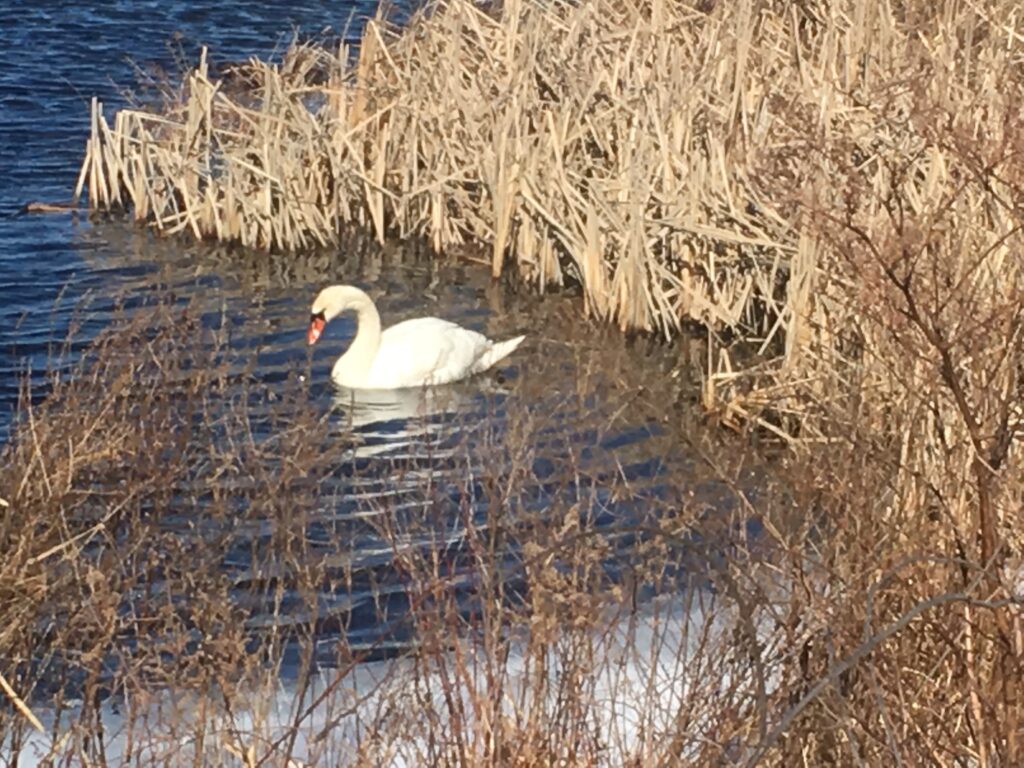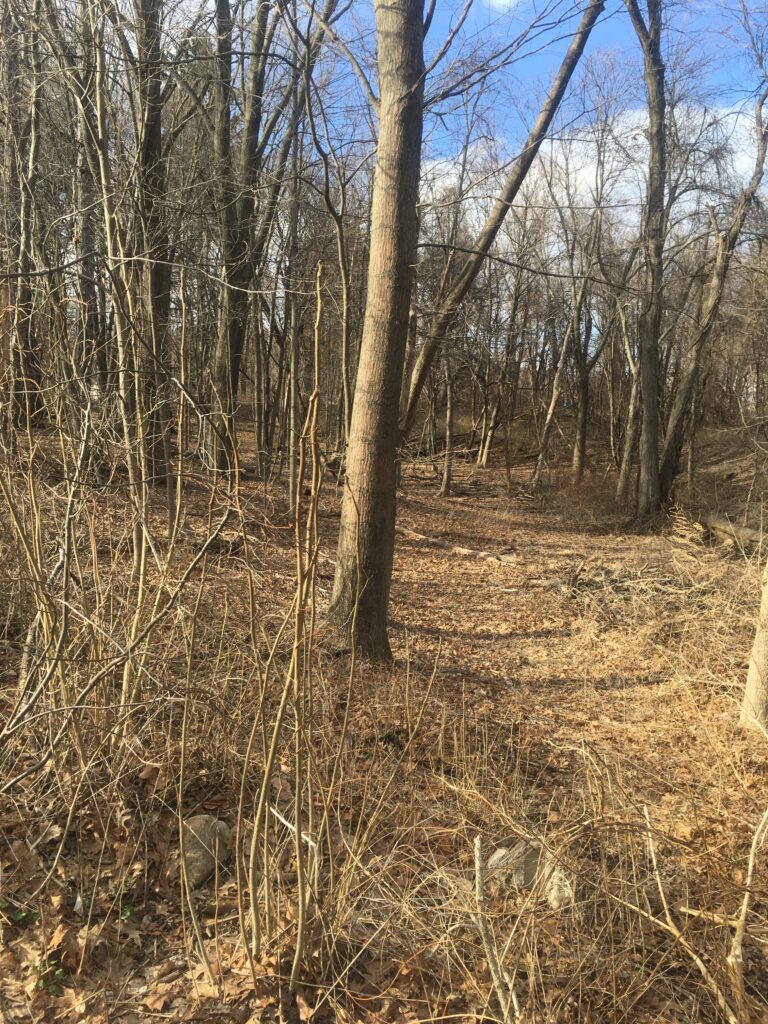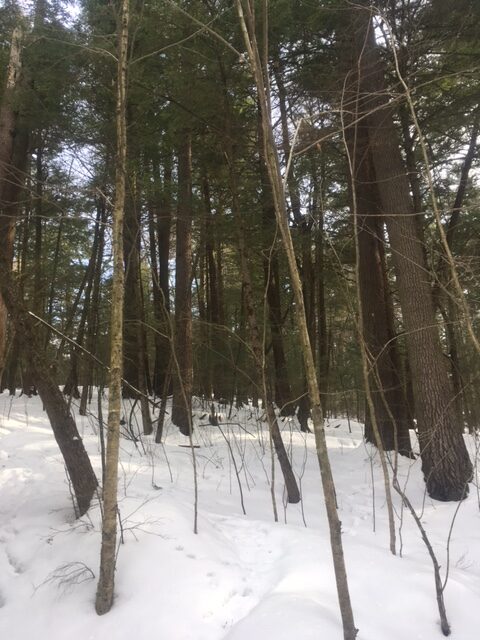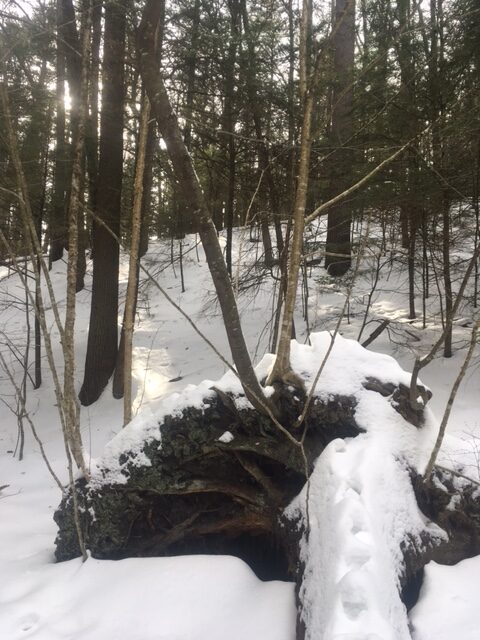The site that I chose to visit over break was the pond and a patch of the surrounding forest at the end of my street in Rockaway, NJ. When I visited this site, NJ had been on a warm streak for a few days and I was unfortunately unable to see any tracks due to the lack of snow. I was able to determine which tree species were most common on my site. The three most prominent species were Yellow Birch, Red Maple, and American Beech. My site in Centennial Woods also contains many Yellow Birch and a few Red Maple, but no American Beech. I believe that the occurrence of Yellow Birch at both sites is because both contain moist, swampy soils that Yellow Birch thrive in. My site in NJ contains a lot more small woody plants than my Centennial Woods site, and unfortunately I was unable to identify most of them. There was an abundance of Common Reed Grass along the water’s edge. This grass is not found in my Centennial Woods site due to the absence of water. There was not an abundance of Christmas Fern at my NJ site like there is in Centennial. I know from past experiences that there are ferns on my NJ site, but they are species that die in the winter and come back in the spring like Cinnamon Fern or Hay-scented Fern. I encountered many birds at my site in NJ. I witnessed a Mute Swan foraging through the weeds in the water, and another swan that was presumably its partner out further on the water. I identified a Tufted Titmouse and Black-capped Chickadee by their calls, although I could not locate them visually. A Red-tailed Hawk also flew over my site at one point. I have identified Black-capped Chickadees at my Centennial Woods site too. One bird I have seen in Centennial that I did not spot in NJ is the Pileated Woodpecker. My NJ site lies at the southern end of their range and it is quite uncommon to see them around.





Recent Comments